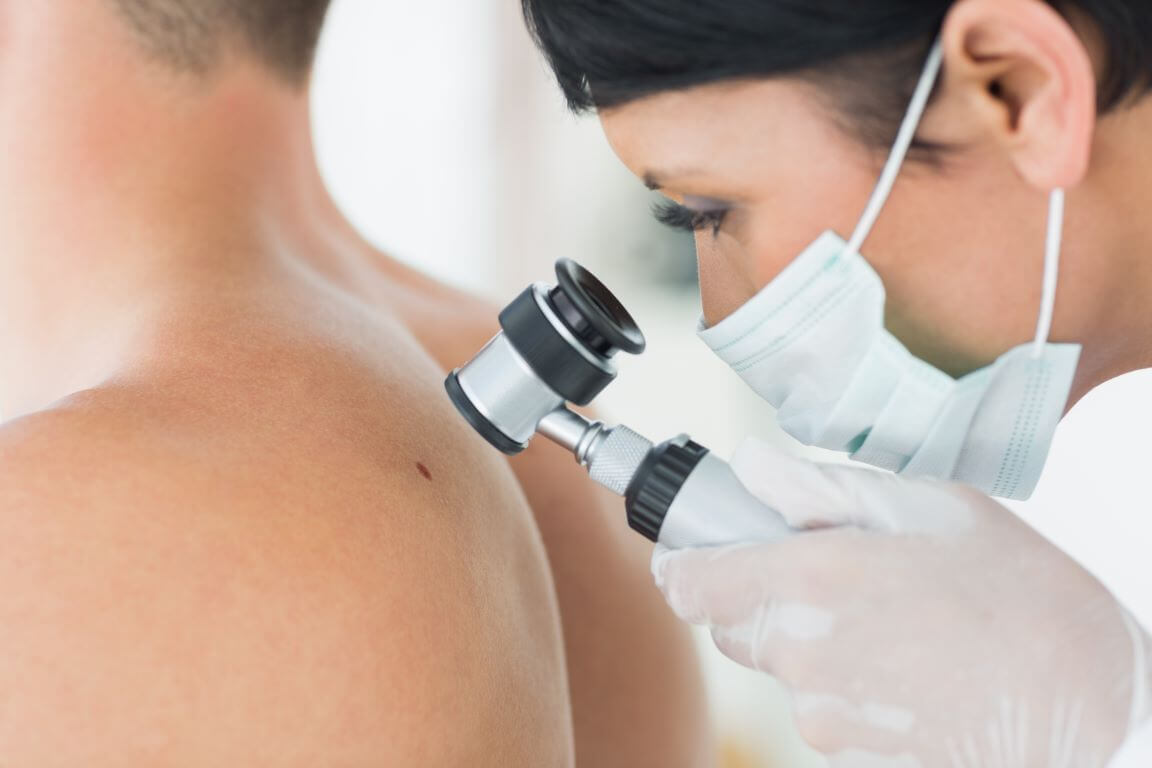Melanoma is a form of skin cancer that has earned its bad reputation. According to Dr. Valerie Truong of U.S. Dermatology Partners in Dallas, Plano, and Corsicana, Texas, “The Skin Cancer Foundation statistics for 2024 indicate that newly diagnosed melanoma cases will increase more than 7%. While this is unwelcome news, they also report that the 5-year survival rate for melanoma detected in early stages is 99%. For this reason, we place a strong emphasis on prevention and consistent self-exams with our patients.” In this blog, Dr. Truong discusses some melanoma basics, including stages, risk factors, prevention, and treatment options.
What is Melanoma?
Melanoma is not the most common form of skin cancer, but it accounts for a large percentage of skin cancer-related deaths. Most melanoma cases develop on parts of the skin that have been damaged by the sun; however, some cases occur in areas that aren’t exposed to sunlight. While it’s important to understand the risks associated with melanoma skin cancers, we also want to avoid spreading misconceptions about melanoma. According to Dr. Truong, “Although melanoma most commonly occurs on sun-exposed sites, Melanoma can develop anywhere on the body, like on the eyes, scalp, nailbeds, and even inside the nasal passages. Another misconception is melanoma only impacts older people or those with lighter skin tones. Cases of melanoma in younger patients and those with darker skin tones are actually rising. If you have questions about melanoma, schedule a consultation with a dermatologist to discuss the facts about melanoma.”
Melanoma Skin Cancer Stages
Melanoma can vary in appearance and in the location where it develops. Some common characteristics include redness and swelling around a growth, itching lesions, sores that don’t heal, a mole that changes, and pigmentation with an uneven border. While melanoma may take on different appearances, there are some warning signs that are easy to spot during regular skin cancer self-checks. Specifically, you should look for the ABCDEs:
- A – Asymmetry – One side of the lesion is different from the other.
- B – Border – The outside edges of the lesion are scalloped or jagged rather than smooth.
- C – Color – The color of the lesion is different from other spots, or there are numerous colors within the same lesion.
- D – Diameter – The lesion is greater than 6 mm in diameter.
- E – Evolution – The lesion is changing quickly.
Staging melanoma skin cancer, Dr. Truong says, “Involves multiple factors: the tumor thickness, features such as ulceration, and whether or not the cancer has spread to lymph nodes to other parts of the body.”
The five melanoma skin cancer stages can be broken down as follows:
- Stage 0 – Melanoma is confined to just the surface layer of skin, the epidermis, and it hasn’t spread or grown significantly.
- Stage 1 – Tumor thickness is less than 2 mm. There may be some ulceration. No spread or metastasizing should have occurred.
- Stage 2 – The lesion may be more than 2 mm thick, and ulceration may be present. There shouldn’t be any signs the cancer has spread to lymph nodes or other tissue.
- Stage 3 – Melanoma lesions of any thickness with or without ulceration that have spread to surrounding skin tissues or nearby lymph nodes. There is no sign melanoma has spread to distant lymph nodes or tissues.
- Stage 4 – Skin cancer has spread to non-adjacent lymph nodes or tissues. The original lesion may be any thickness, and there may or may not be ulceration.
Types of Melanoma Skin Cancer
Different types of melanoma vary with different characteristics. Common melanoma types include:
- Superficial spreading melanoma – This type of melanoma is common in people under 40. It most often develops on the chest, shoulders, stomach, sides, and back. This slow-growing form of skin cancer may appear as a new freckle or mole or develop out of existing freckles or moles. The longer it grows, the more likely it is to grow into deeper layers of skin.
- Nodular melanoma – This form of melanoma is common for people over the age of 65. It often looks like a firm, raised bump that may be red, pink, or brown in color. It can develop a scab-like surface that bleeds easily. It often develops on the head and neck, and it can grow and spread very quickly.
- Lentigo maligna melanoma – This form of melanoma typically develops in those over the age of 40. It looks like a large, oddly colored spot on the skin of the head or neck. It usually grows superficially across the outer layers of the skin before spreading deeper into the skin’s layers.
- Acral lentiginous melanoma – This type of melanoma is often overlooked because it has the appearance of a mild stain or bruise. This type of melanoma appears on the hands, feet, or nail beds.
- Demoplastic melanoma – This form of melanoma is most common for people over the age of 60. It usually presents as a firm, skin-colored lump on the head or neck. It usually grows slowly, but it’s often diagnosed in later stages.
Risk Factors and Prevention
Anyone can develop melanoma, but some risk factors make it more likely, including:
- UV exposure – Frequent or prolonged exposure to the sun and other sources of UV radiation is the leading cause of all forms of skin cancer, including melanoma.
- Sunburns – Having one or more sunburns, especially severe burns, significantly increases the risk of developing skin cancer.
- Moles – Those who have numerous moles are more likely to develop melanoma due to the higher levels of melanocyte cells.
- Genetics – Those with a family history of melanoma or other skin cancers may be more likely to develop melanoma.
If you’re at a higher risk for melanoma or you just want to reduce your risk of developing any kind of skin cancer, keep the following melanoma prevention tips in mind:
- Wear sunscreen.
- Limit sun exposure.
- Cover skin with protective clothing to prevent UV damage.
- Don’t tan in natural or artificial UV light.
- Perform skin cancer self-checks once a month.
- Visit a dermatologist each year for a professional skin cancer screening.
Treatment Options
According to Dr. Truong, “Your recommended treatment will vary dramatically based on your individual situation. The stage of skin cancer at the time of diagnosis, your health, the location, and a range of other factors will all contribute to your treatment plan. A dermatologist will make a treatment recommendation that is unique to you. If necessary, they may also partner with a cancer specialist called an oncologist to develop a personalized plan.” While your treatment plan will be customized to meet your needs, some of the common treatments for melanoma include:
- Surgery – Surgical removal of cancerous cells and some healthy surrounding skin cells to ensure all damaged tissue has been removed.
- Chemotherapy – Oral or injected medications that stop the growth of new cancer cells and destroy existing melanoma cells.
- Radiation therapy – High energy waves are used to destroy cancer cells or prevent them from dividing.
- Immunotherapy – These forms of treatment are designed to train the body’s immune system to fight cancer.
- Targeted therapy – A unique, personalized form of skin cancer treatment that utilizes a variety of medications and other procedures to target and destroy cancer cells.
Want to Learn More?
We know that skin cancer can be a scary topic, but if our patients know about the symptoms and risk factors, they are better equipped to notice and report irregularities and seek professional advice in the earliest stages of skin cancer. Early intervention is extremely important to minimize the risk associated with melanoma. If you have concerns about an irregular lesion or want to learn more about what to look for when performing a skin cancer self-check, the U.S. Dermatology Partners team is here for you. Getting started working with one of our local dermatologists is quick and easy. Just take a few moments to fill out our online appointment request. From there, a U.S. Dermatology Partners team member will be in touch to finalize the details of your visit.
Find a location near me
or


